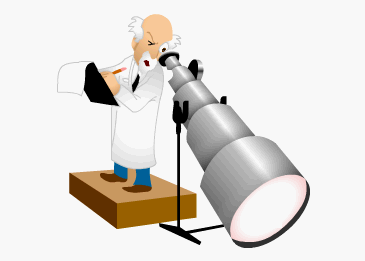Secondary data are data that are taken from research works already done by somebody and used for the purpose of the research data collection. The reason why secondary data are being increasingly used in research is that published statistics are now available covering diverse fields so that an investigator finds required data readily available to him’ in many cases. For certain studies like stock price behavior, interest and exchange rate scenario, etc. only secondary data are used. There are two broad categories of secondary data – internal secondary data and external secondary data. Internal secondary data: Internal (secondary) data refers to information that already exists within the company in which the research problem arises. For instance, in many companies, salesmen routinely record and report their sales. Examples of secondary data include records of sales, budgets, advertising and promotion expenditures, previous marketing research studies and similar reports. Use of such secondary Continue reading
Research Basics
Pre-Testing Research Data Collection Instruments
The tool or instrument of data collection namely the schedule or the questionnaire should be pre-tested before adopted for data collection on the study. Pre-testing simply means, testing the validity, reliability, practicability and sensitivity of the tool before it is used for actual data collection. The only way to gain assurance that questions are unambiguous is to try them on a selected small group of prospective respondents. Process of Pre-testing Pre-testing can be done in parts. Different sub-parts in the main part of the questionnaire/schedule can be differently pre-tested. So a series of small pre-test on different units of the tool can be done. A full scale pre-test of the whole tool can be done if needed finally or in lieu of the series of pre-tests is small bits. Pre-testing must be done on a sample that is representatives of the population. May be 10 to 12 respondents for pre-testing Continue reading
Using Different Types of Surveys for Data Collection in Research
Surveying means contacting for getting certain information. Survey method is a method of collecting data for research purpose. There are personal surveys, mail surveys, telephone surveys and internet surveys. Survey may be sample survey or census survey. The features of each of surveys are given below: Personal Survey Personal survey involves meeting personally every number who has to be surveyed. The features of this method of data collection are as follows. The number of respondents that can be contacted is not very high, as the time taken to contact the respondent, and the time spent on the interview itself is very high in relative terms. When the time available for research in large the personal method is used. The cost involved is highest in the personal method since it requires field interviewers as well as their conveyance/ traveling costs. Also, if a person is not available he may have to Continue reading
Observation Method of Research Data Collection
Observation means the careful and systematic watching of facts as they occur in course of nature. In the strict sense, observation implies more use of the eyes and the ears than the mouth. Aspects of Observation Observation involves three processes, i.e. (i) sensation (ii) attention (iii) perception. Sensation is gained through the sense organs which depend upon the physical alertness of the observer. The sense organs are receptive to stimuli and get attracted leading to the first stage in observation. Then comes attention or concentration which is largely a matter of commitment and will-power. Adequate training and experience can make it almost a matter of habit. The third is perception which comprises the interpretation of sensory reports. Thus, sensation merely reports the facts as observed but perception enables the mind to recognize the facts. Through this process, observation serves the purpose of (i) studying collective behavior and complex social situations; Continue reading
Basic Laws of Sampling
Sometimes it is possible to obtain sufficiently accurate results by studying a part/a segment of the population. Thus the few items are selected from the population in such a way that they are the representative of the universe and these representatives in research are called as ‘sample’. The process of selecting the representatives from the population is called ‘sampling’. Thus sampling is simply the process of learning about population on the basis of sample drawn from it. Under this method a small group of universe is taken as the representative of the whole mass and the results are drawn. It is the method to make social/business investigation practicable and easy. Sampling is, therefore, resorted to when either it is impossible to enumerate all the units in the whole population or when it is too costly to enumerate in terms of time and money or when the uncertainty inherent in sampling Continue reading
Sample Design
A sample design is a definite plan for obtaining a sample from a given population. It refers to the technique or the procedure the researcher would adopt in selecting items for the sample. Sample design also leads to a procedure to tell the number of items to be included in the sample i.e., the size of the sample. Hence, sample design is determined before the collection of data. Among various types of sample design technique, the researcher should choose that samples which are reliable and appropriate for his research study. Steps in Sample Design There are various steps which the researcher should follow. Those are; Type of universe: In the first step the researcher should clarify and should be expert in the study of universe. The universe may be finite (no of items are know) or Infinite (numbers of items are not know). Sampling unit: A decision has to be Continue reading


